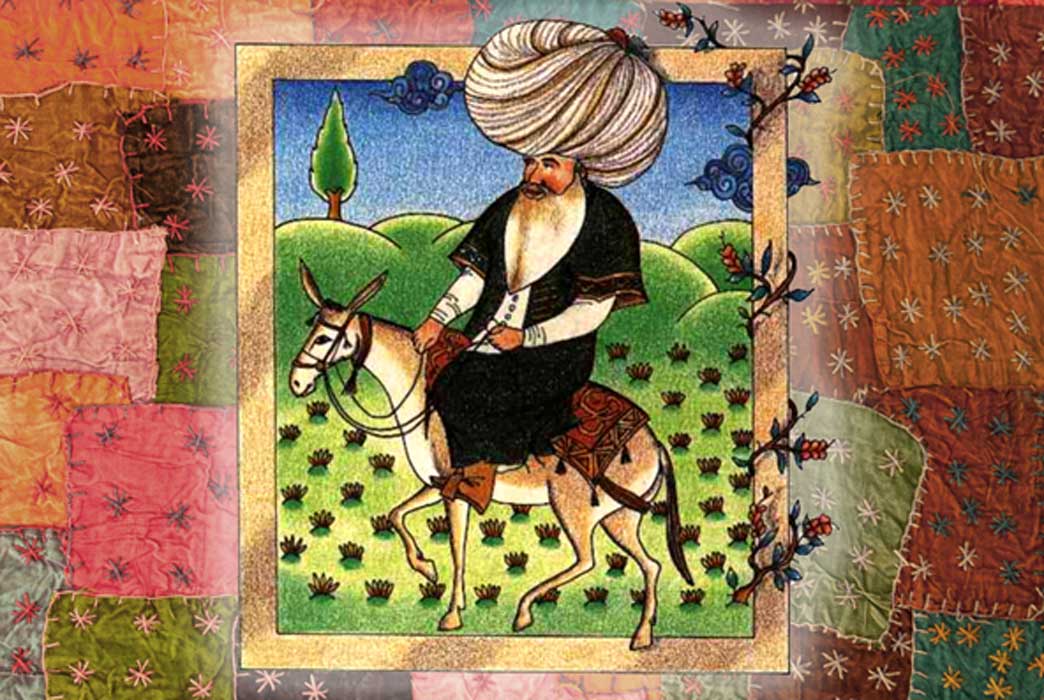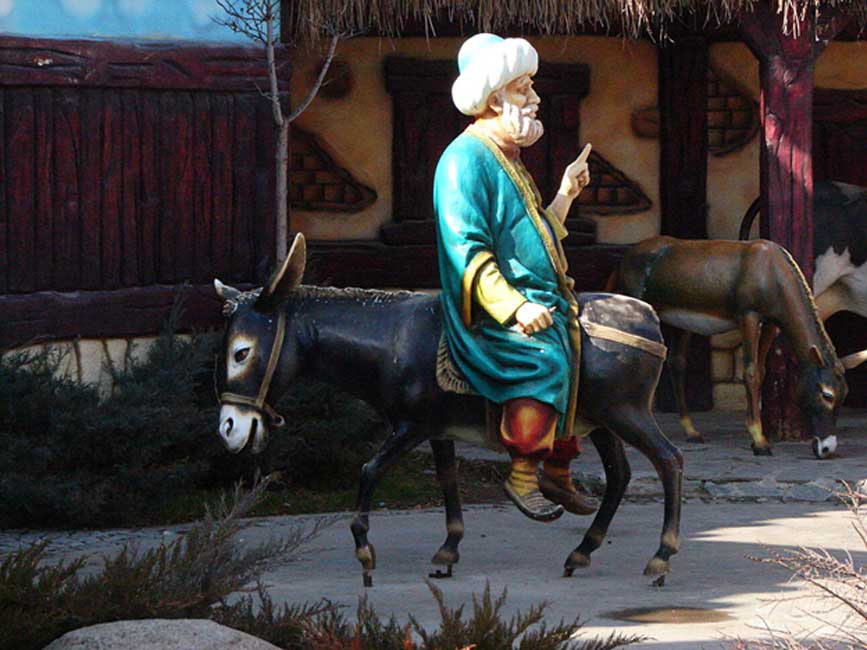
A Real Wiseguy! Witty Sage and Ancient Comedian Nasreddin Hodja Has the Last Laugh
One day Hodja and his students were on the way to their lesson. Hodja was sitting backwards on his donkey. "Hodja, they asked him "Why on earth do you sit that way? Isn't it uncomfortable?"
"If I sit the other way," he answered, "you would all be behind me and we wouldn't be face-to-face. Riding this way is better."
(Kabacali, A., Nasreddin Hodja, p.1)
A white-bearded and big-bellied man wearing a huge turban and a green caftan— a representative of Nasreddin Hodja—paraded the streets of Rotterdam to deliver messages of peace, tolerance and secular wisdom in 2005 at the Nasreddin Hodja Festival in Netherlands. In 2006, the inauguration of a statue of Nasreddin Hodja facing backwards on his donkey, on Rue Galait in Schaerbeek, Brussels, took place with similar messages.

Statue of Nasreddin Hodja and Donkey, Ankara. (© Nevit Dilmen/CC BY-SA 3.0)
People in Turkey have known the jokes and stories of Nasreddin Hodja, a comedic writer said to have lived in the 13th century, since their childhoods. His stories have traveled over land and sea, making their way into the hearts and minds of tribal members of various cultural backgrounds, from Turkey to the Persian, Arabian and African cultures, even along the Silk Road to China and India. His messages are so universal that every culture seems to claim this man as their own. However, despite his popularity, there are still debates about his very existence. So, who is Nasreddin Hodja and did he really exist?
Will the Real Nasreddin Please Stand Up
One day four boys approached Hodja and gave him a bagful of walnuts.
"Hodja, we can't divide these walnuts among us evenly. So would you help us, please?"
Hodja asked, "Do you want God's way of distribution or mortal's way?"
"God's way," the children answered.
Hodja opened the bag and gave two handfuls of walnuts to one child, one handful to the other, only two walnuts to the third child and none to the fourth.
"What kind of distribution is this?" the children asked baffled.
"Well, this is God's way," he answered, "He gives some people a lot, some people a little and nothing to others. If you asked for mortal's way I would have given the same amount to everybody."(Kabacali, A., Nasreddin Hodja, p.3)
Through his many names, Nasruddin Hodja became the main character in a vast number of tales told in regions all over the world, particularly in countries in or near the Middle East. However, although the mysterious figure of Nasreddin Hodja is claimed by many different cultures as their own, it does not shed any light on his origins.
- The Controversial Plays of Aristophanes: How the Ancient Greek Father of Comedy Created a Legacy
- The Tale of Thorstein Shiver: Hell Confirmed for Pagans during Iceland Saga Age
- Physician unravels cause of deformities of famous Punch character
- The Strange Life of Al-Khidr, the Legendary Immortal Prophet, Mystic, Trickster and Sea Spirit
In Arabic-speaking countries, he is known as "Juha". However, Juha was also a separate folk character found in Arabic literature as early as the 9th century CE. In Sicily and Southern Italy, Nasreddin Hodja is known as "Giufa". In the Swahili culture, many of his stories are being told under the name of "Abunuwasi" or "Abunawas", although this again confuses Nasreddin Hodja with an entirely different man – the poet Abu Nuwas who is known for his poetries. In China, Nasreddin Hodja is known as 阿凡提 (Āfántí). However, his historical existence is still problematic, as the various theories regarding his biography did not succeed to build certain facts. Even his place of birth is debated as the Uyghurs believe that he was from Xinjian, while the Uzbeks believe he was from Bukhara. From the 16th century, this personality served increasingly as a point of crystallization for a popular, albeit formless, tradition of jokes and anecdotes of different origins.




